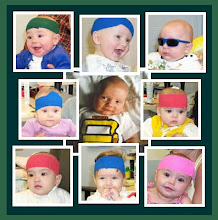Secondhand Smoke and Children Fact Sheet
SOURCE : AMERICAN LUNG ASSOCIATION
.
.
Provided by
DR WIDODO JUDARWANTO
DR WIDODO JUDARWANTO
SAVE CHILDRENS FROM SMOKE
Working together make a smoke-free homes and smoke-free zones for all children
Yudhasmara Foundation
JL TAMAN BENDUNGAN ASAHAN 5 JAKARTA PUSAT, JAKARTA INDONESIA 10210
PHONE : (021) 70081995 – 5703646
email : cfc2006@hotmail.com, judarwanto@gmail.com
www.savechildfromsmokers.blogspot.com/
Working together make a smoke-free homes and smoke-free zones for all children
Yudhasmara Foundation
JL TAMAN BENDUNGAN ASAHAN 5 JAKARTA PUSAT, JAKARTA INDONESIA 10210
PHONE : (021) 70081995 – 5703646
email : cfc2006@hotmail.com, judarwanto@gmail.com
www.savechildfromsmokers.blogspot.com/
.
.
September 2008
Secondhand smoke is a mixture of the smoke given off by the burning end of a cigarette, pipe or cigar and the smoke exhaled from the lungs of smokers. Secondhand smoke contains more than 250 chemicals known to be toxic or cancer causing, including formaldehyde, benzene, vinyl chloride, arsenic, ammonia, and hydrogen cyanide.1
Infants and young children are especially susceptible: their lungs are still developing and childhood exposure to secondhand smoke results in decreased lung function. Children who breathe secondhand smoke are more likely to suffer from cough, wheeze, phlegm and breathlessness.2
In children, exposure to secondhand smoke causes over 202,000 asthma episodes in children with asthma.3
The current Surgeon Generals Report states that there is no risk-free level of secondhand smoke exposure. Even brief exposures can be harmful to children.4
Infants and children suffer additional acute lower respiratory tract infections, such as pneumonia and bronchitis, due to secondhand smoke exposure.5
Of children 3 to 11 years of age, almost 60 percent, or 22 million, are exposed to secondhand smoke. Almost 25 percent live with at least one smoker, compared to 7 percent of nonsmoking adults.6
Secondhand smoke exposure causes buildup of fluid in the middle ear, resulting in 790,000 visits to health care providers. Middle ear infections are the most common cause of childhood operations and of childhood hearing loss.7
A California EPA study 430 sudden infant death syndrome (SIDS) deaths are annually associated with secondhand smoke exposure.8
Babies whose mothers smoke while pregnant or who are exposed to secondhand smoke after birth have weaker lungs than other babies, which increases the risk of many other health problems.9
Babies are 20 percent more likely to be born low-birth weight if their mother was exposed to secondhand smoke during the pregnancy.10
For more information on smoking, please review the Trends in Tobacco Use report and Lung Disease Data in the Data and Statistics section of our website at http://www.lungusa.org/site/c.dvLUK9O0E/b.22542/k.CA6A/Home.htmwww.lungusa.org, or call the American Lung Association at 1-800-LUNG-USA (1-800-586-4872).
Sources:
- U.S Department of Health and Human Services. The Health Consequences of Involuntary Exposure to Tobacco Smoke. A Report of the Surgeon General, 2006. Children are Hurt by Secondhand Smoke Factsheet. January 4, 2007. Accessed on July 30, 2008.
- Ibid.
- California Environmental Protection Agency. Identification of Environmental Tobacco Smoke as a Toxic Air Contaminant. Executive Summary. June 2005.
- U.S Department of Health and Human Services. The Health Consequences of Involuntary Exposure to Tobacco Smoke. A Report of the Surgeon General, 2006. Children are Hurt by Secondhand Smoke Factsheet. January 4, 2007. Accessed on July 30, 2008.
- Ibid.
- U.S Department of Health and Human Services. The Health Consequences of Involuntary Exposure to Tobacco Smoke. A Report of the Surgeon General, 2006. Secondhand Smoke Exposure in the Home Factsheet. January 4, 2007. Accessed on August 28, 2008.
- California Environmental Protection Agency. Identification of Environmental Tobacco Smoke as a Toxic Air Contaminant. Executive Summary. June 2005.
- Ibid.
- U.S Department of Health and Human Services. The Health Consequences of Involuntary Exposure to Tobacco Smoke. A Report of the Surgeon General, 2006. Children are Hurt by Secondhand Smoke Factsheet. January 4, 2007. Accessed on July 30, 2008.
- U.S Department of Health and Human Services. Centers for Disease Control and Preveniton. Preventing Smoking and Exposure to Secondhand Smoke Before, During and After Pregnancy. July 2007. Accessed on September 18, 2008.

















Tidak ada komentar:
Posting Komentar